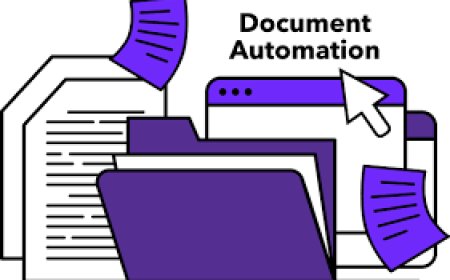TMS in Supply Chain: Enhancing Logistics Through Technology
At the center of this logistics revolution lies TMS in the supply chain—Transportation Management Systems (TMS)—which are redefining how goods move from suppliers to customers.

A TMS is a technology platform that helps businesses plan, execute, and optimize the physical movement of goods. It integrates with various elements of the supply chain and is designed to increase visibility, enhance control, and improve the overall efficiency of transportation logistics.
What is TMS in the Supply Chain?
Transportation Management System (TMS) is a software solution that manages the planning, execution, and optimization of transportation operations. It helps logistics managers streamline inbound and outbound shipping processes, select the best carriers, track shipments, manage freight bills, and analyze transportation data.
By integrating TMS in supply chain, companies can automate workflows, gain real-time visibility into shipments, and ensure on-time deliveriesall while reducing operational costs.
Key Functions of TMS in the Supply Chain
-
Shipment Planning and Optimization
-
TMS enables users to plan routes and shipments efficiently by consolidating loads, choosing cost-effective carriers, and scheduling pick-ups and deliveries based on real-time data.
-
-
Carrier Management
-
Businesses can compare carriers based on rates, transit times, and service levels to choose the best option for each shipment.
-
-
Real-Time Tracking
-
TMS offers GPS-enabled tracking that gives complete visibility into the movement of shipments, providing updates to both customers and logistics managers.
-
-
Freight Payment and Audit
-
Automated systems verify carrier invoices, match them with shipment data, and detect discrepanciessaving time and avoiding overcharges.
-
-
Analytics and Reporting
-
TMS provides key insights through dashboards and reports, helping businesses analyze performance, carrier reliability, costs, and areas for improvement.
-
Benefits of Implementing a TMS in the Supply Chain
1. Improved Operational Efficiency
Automating transportation tasks reduces the need for manual data entry, minimizes errors, and allows staff to focus on strategic functions.
2. Cost Reduction
TMS helps businesses save money by optimizing routes, choosing the most cost-effective carriers, and consolidating loads to minimize empty miles.
3. Real-Time Visibility
Shipment tracking and alerts help in proactive decision-making, reducing delays and improving customer satisfaction.
4. Better Customer Service
By ensuring timely deliveries and offering shipment status updates, companies can provide a seamless customer experience.
5. Regulatory Compliance
Many TMS platforms help businesses comply with international shipping regulations, environmental policies, and safety standards.
6. Scalability
Whether a company ships ten or ten thousand orders daily, a TMS can scale to match growth without compromising performance.
TMS Integration in the Supply Chain Ecosystem
A TMS doesnt operate in isolationit must integrate with other systems in the supply chain management (SCM) environment, including:
-
ERP Systems (Enterprise Resource Planning): For syncing order data, financial information, and inventory levels.
-
WMS (Warehouse Management Systems): For coordinating inventory availability and dispatch.
-
CRM (Customer Relationship Management): To provide shipping data and service updates to customers.
-
EDI (Electronic Data Interchange): For electronic communication with carriers and third-party logistics providers.
Use Cases of TMS in Different Industries
Retail and E-Commerce
Retailers use TMS to ensure quick delivery, manage returns efficiently, and offer real-time shipment updates to customers.
Manufacturing
Manufacturers rely on TMS to coordinate the delivery of raw materials and parts, as well as to distribute finished products across global markets.
Pharmaceuticals
With strict regulations and the need for temperature-controlled logistics, pharma companies use TMS to ensure compliance and maintain product integrity.
Food and Beverage
Time-sensitive products require precise route planning, and TMS ensures quick delivery while maintaining freshness and quality.
Cloud-Based vs. On-Premise TMS
Modern businesses now choose between cloud-based TMS and on-premise TMS solutions:
Cloud-Based TMS
-
Pros:
-
Lower upfront costs
-
Faster implementation
-
Remote access and mobile support
-
Continuous updates and support
-
-
Cons:
-
Dependent on internet connectivity
-
Data security concerns for highly regulated industries
-
On-Premise TMS
-
Pros:
-
Full control over data and infrastructure
-
Customizable to business needs
-
-
Cons:
-
Higher initial investment
-
Longer deployment time
-
Requires dedicated IT maintenance
-
Emerging Trends in TMS and Supply Chain Logistics
1. Artificial Intelligence (AI) and Machine Learning (ML)
AI-enabled TMS platforms can forecast demand, suggest optimal routes, predict delays, and analyze historical data for continuous improvement.
2. Internet of Things (IoT)
Sensors and IoT devices provide real-time data about vehicle conditions, temperature, driver behavior, and moreenhancing transparency.
3. Blockchain Integration
Blockchain can improve security, traceability, and trust across the logistics network, especially in cross-border shipping.
4. Autonomous and Electric Vehicles
TMS platforms are being enhanced to work with future fleets, including autonomous delivery trucks and electric vehicles.
5. Sustainability and Green Logistics
TMS helps businesses reduce carbon footprints by optimizing fuel usage and identifying eco-friendly delivery options.
Challenges in TMS Implementation
Despite its benefits, implementing a TMS in the supply chain can present certain challenges:
-
Initial Investment Costs
Implementation can be expensive for small and mid-sized businesses, especially with advanced features. -
Change Management
Employees need training to adapt to new systems and processes. -
Integration Complexity
Integrating TMS with existing systems like ERP and WMS can require extensive IT resources. -
Data Quality
Inaccurate or incomplete data can limit the effectiveness of route optimization and carrier selection algorithms.
Conclusion
A TMS in the supply chain is no longer just a value-added toolit has become a core necessity for companies striving to achieve operational excellence, cost efficiency, and high customer satisfaction. From route planning to real-time tracking and freight auditing, TMS automates and optimizes every aspect of transportation logistics.
As businesses expand and supply chains become more complex, the demand for agile, intelligent, and integrated TMS solutions will only grow. Organizations that invest in the right TMS will position themselves to deliver faster, operate leaner, and outperform their competitors in a dynamic marketplace.








&srotate=0)



























